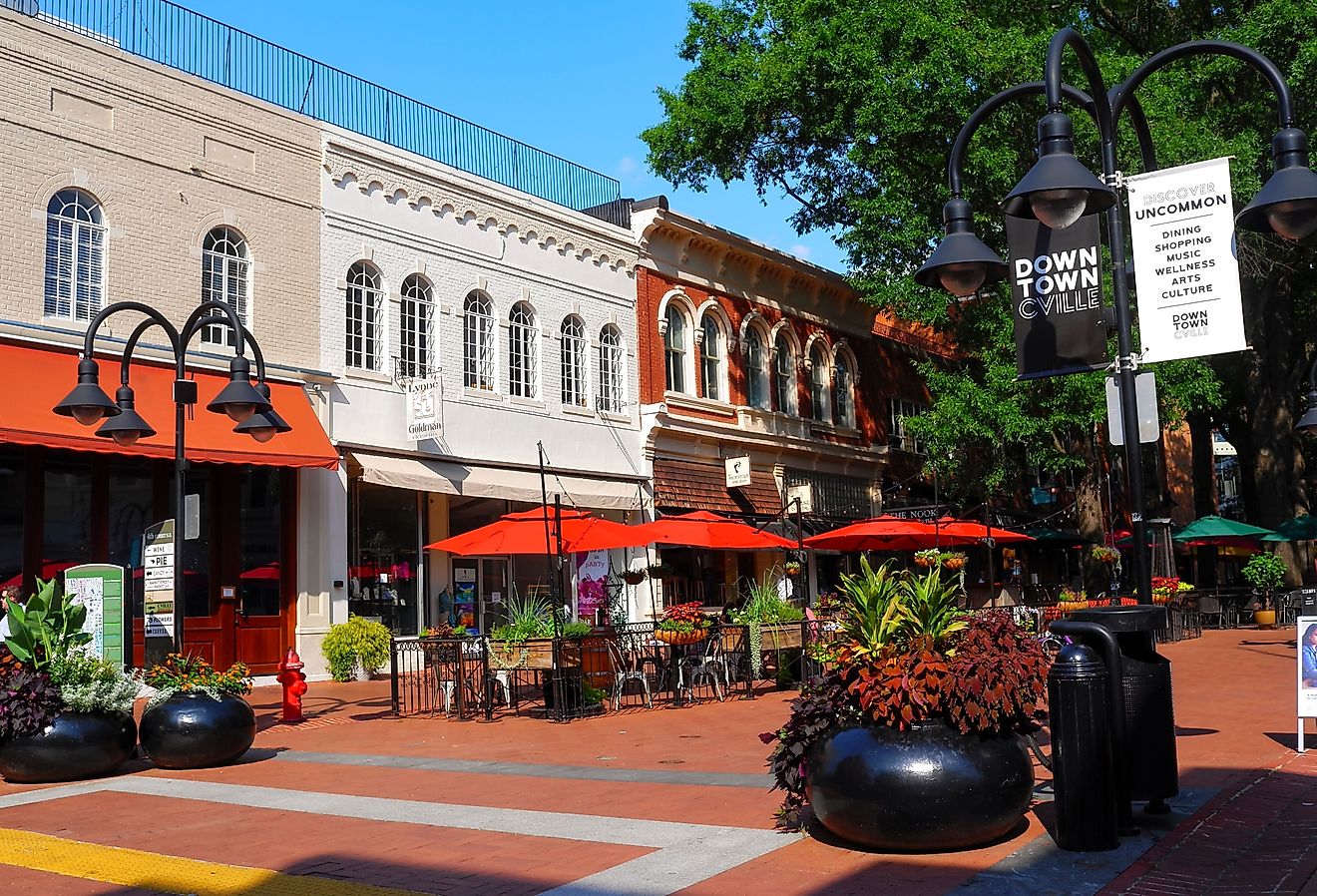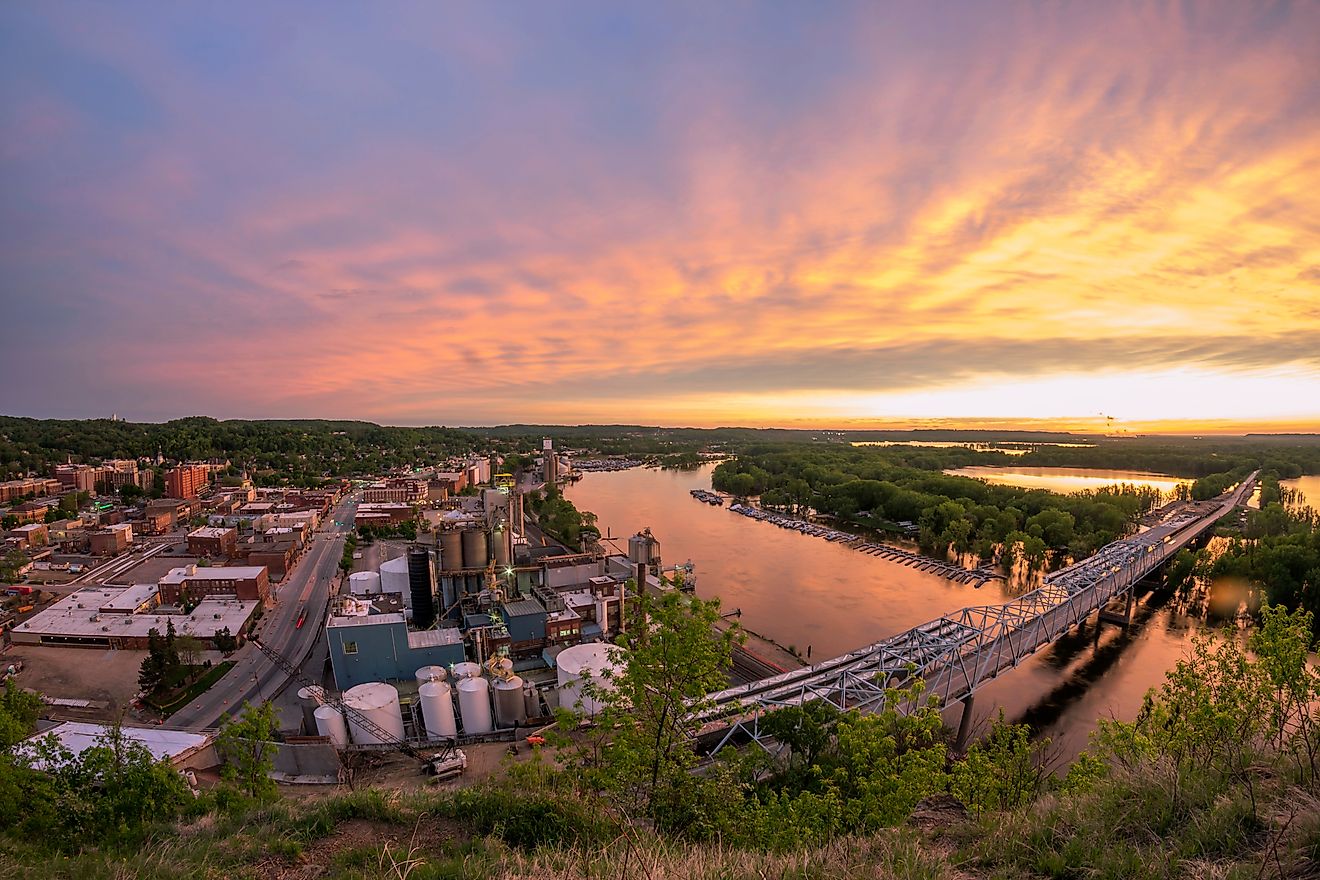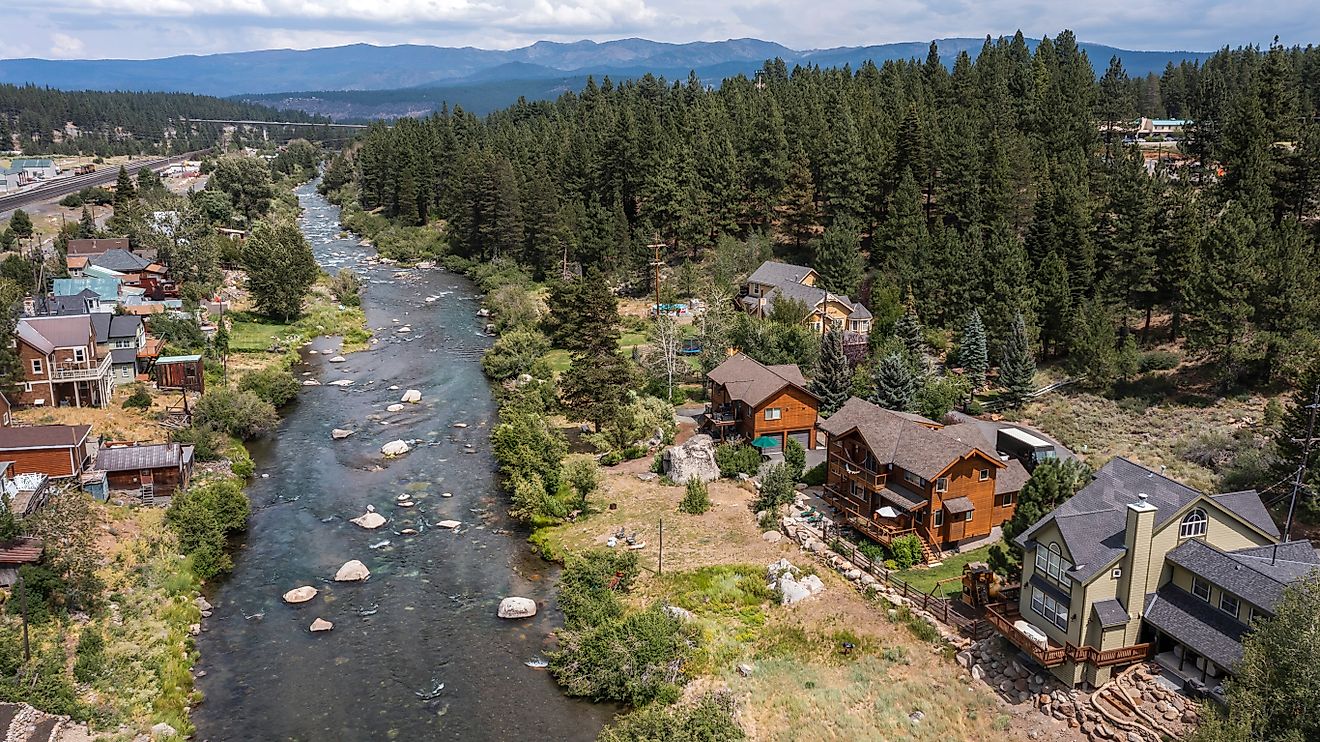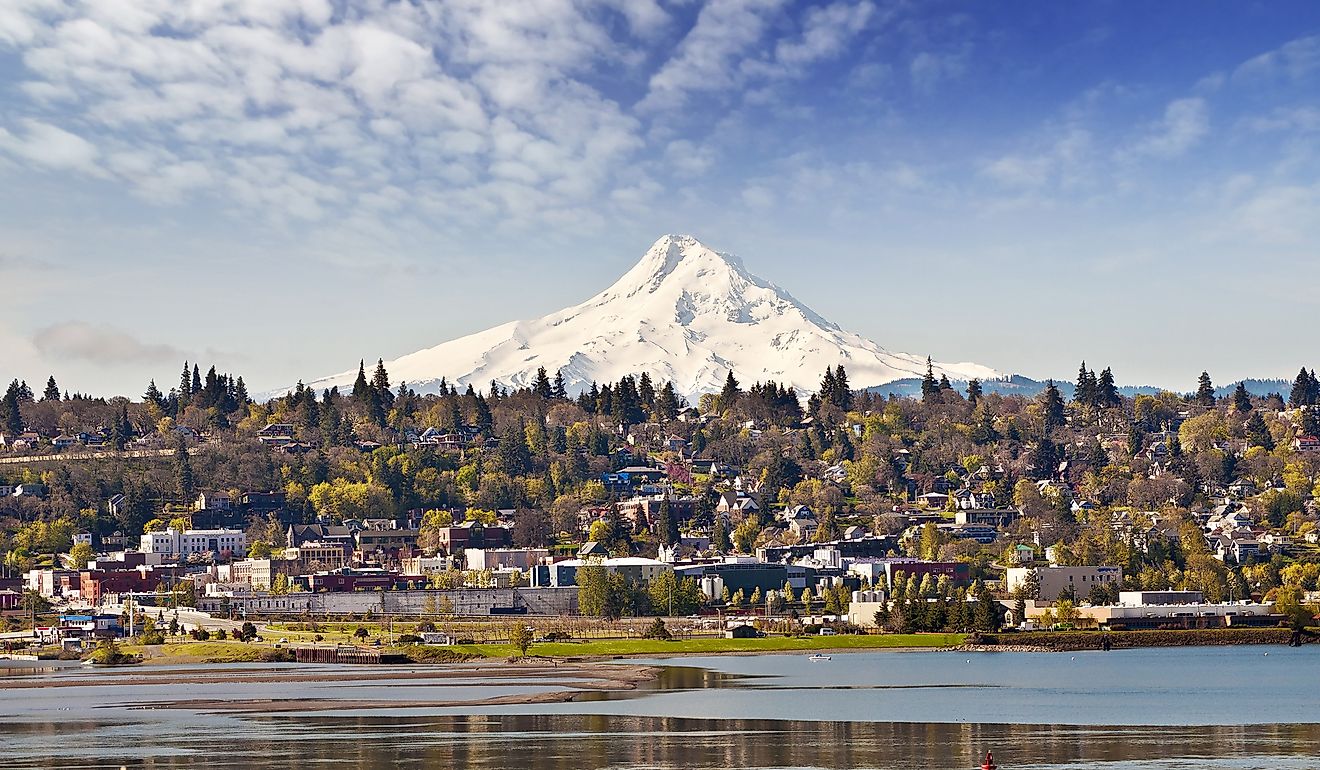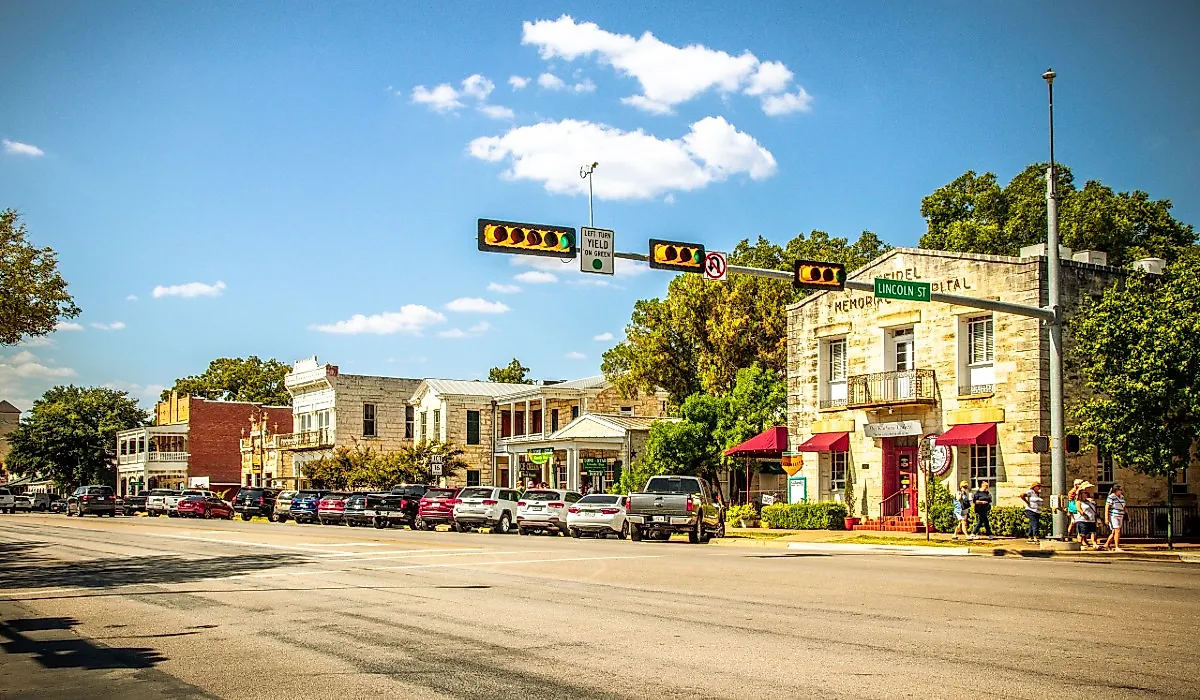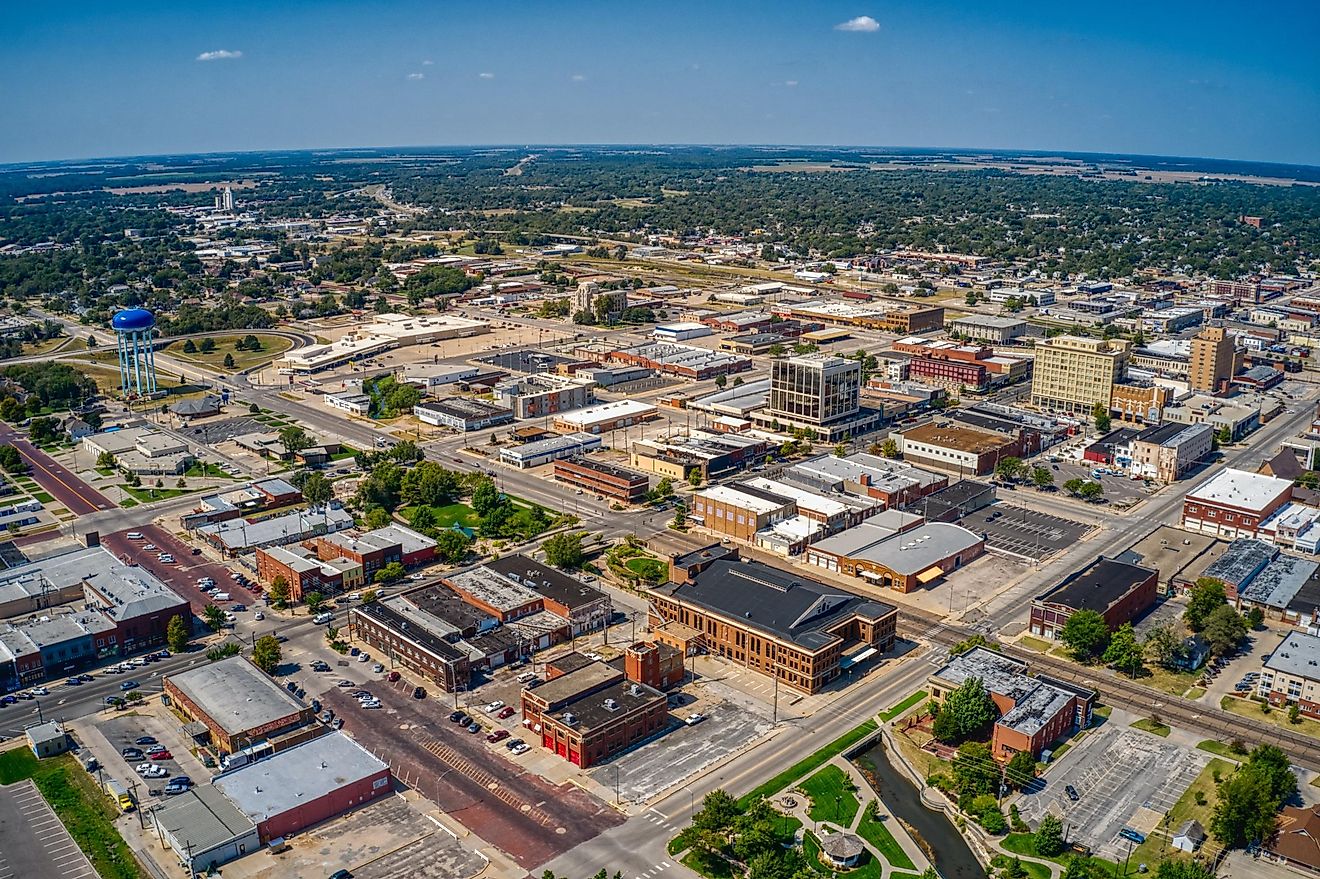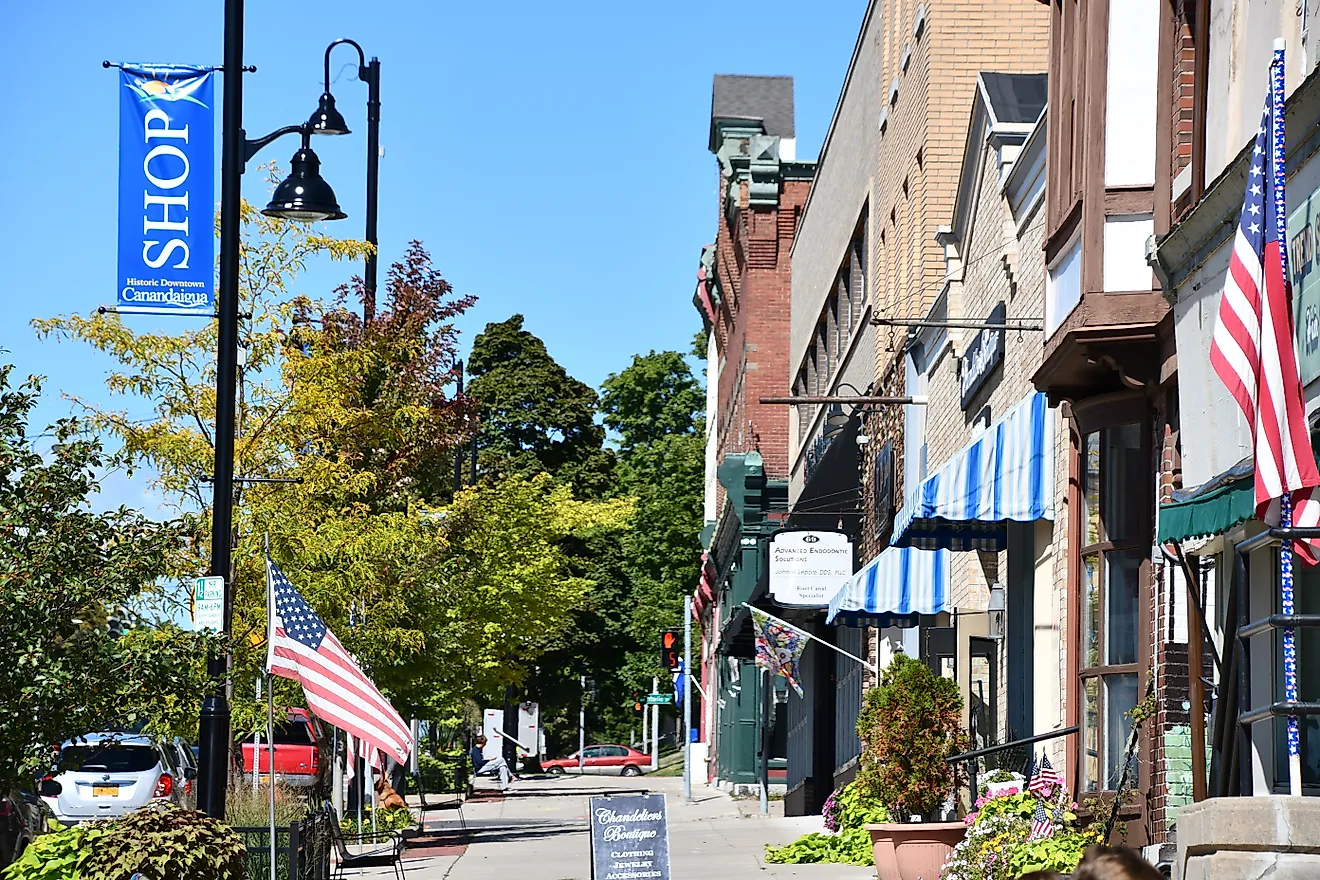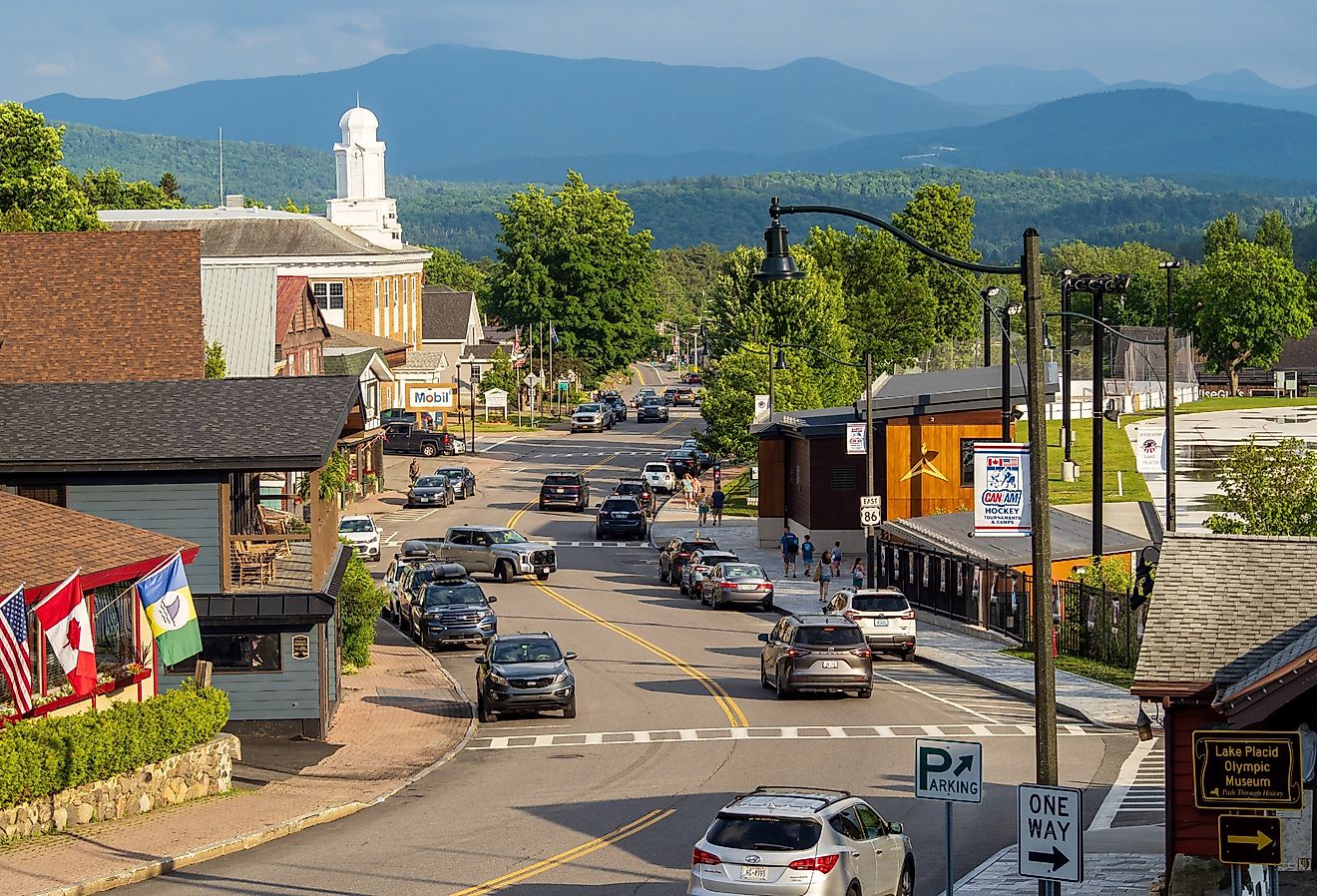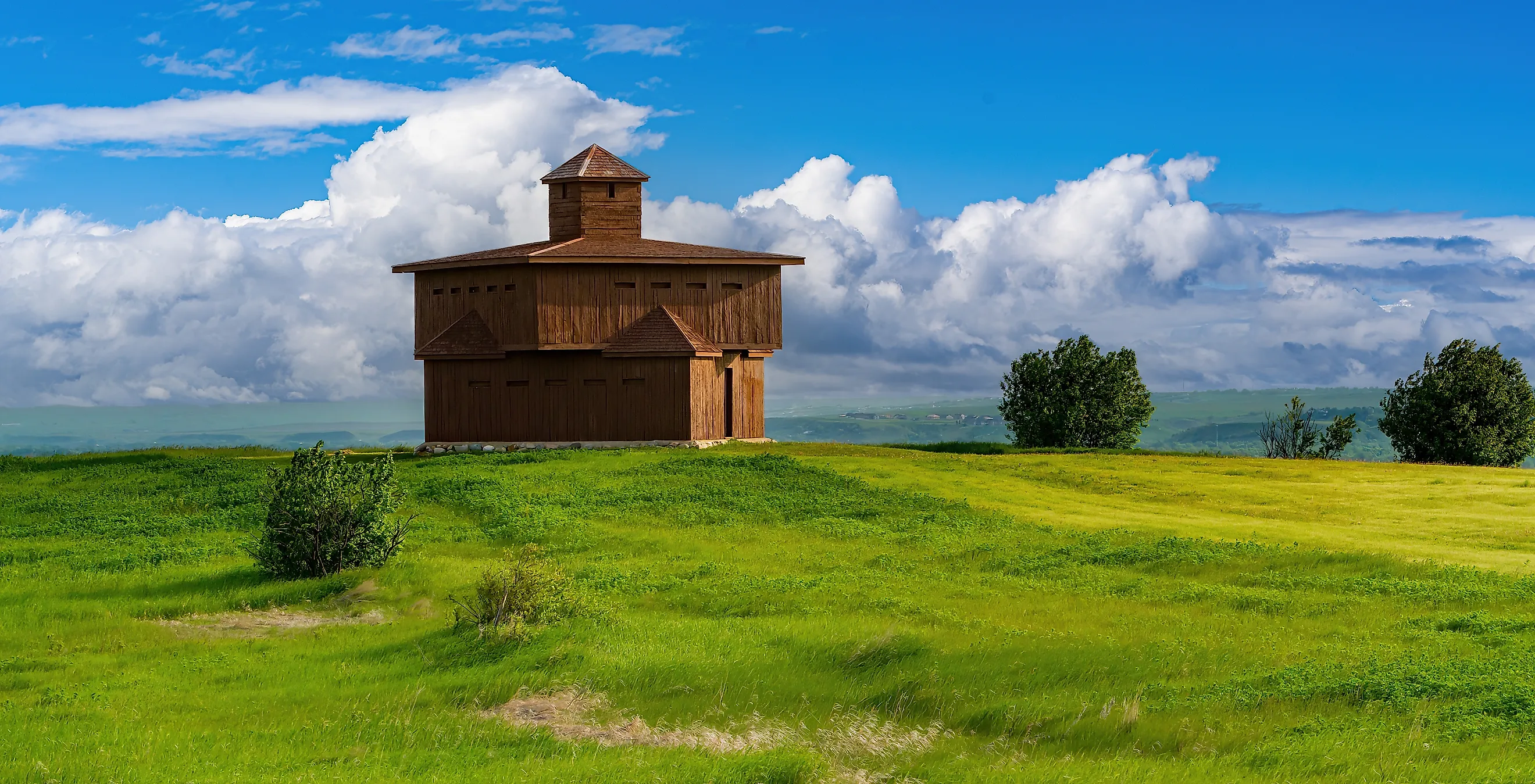
8 Must-See Historic Forts In North Dakota
The state of North Dakota has a long and storied past. Throughout its history, it was at the center of trade and cultural intermixing. However, it also saw conflict and played an important role in the Sioux Wars of the late 19th century. Throughout that time, forts were constructed to help supply settlers, miners, soldiers, and even workers forging branches of the Northern Pacific Railroad. If you want to dive into the intriguing history of North Dakota, then a visit to any of these eight forts will help you better understand the complex history of the state.
Fort Abercrombie
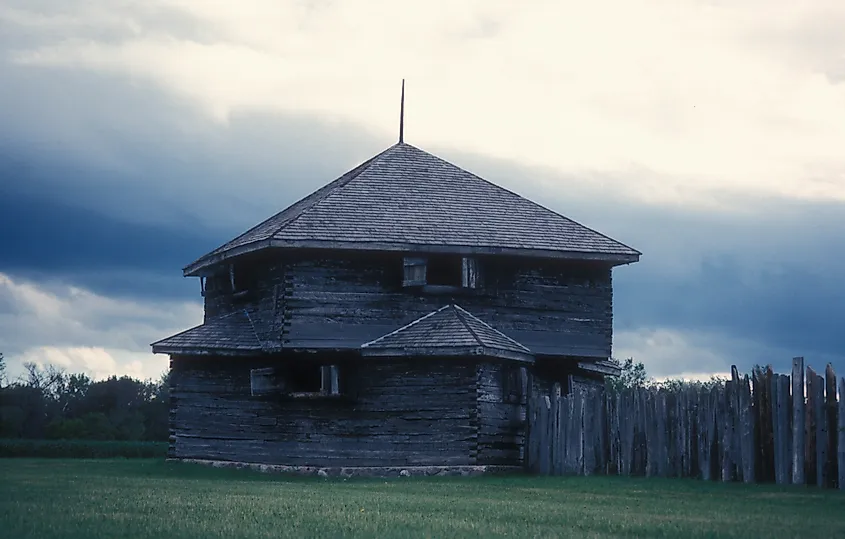
Fort Abercrombie was first constructed in 1858, led by Lieutenant Colonel John J. Abercrombie. Constructed at the juncture where ox-driven carts and wagons routinely met near the Red River, the fort was placed at an important crossroads for travelers. Miners launched expeditions into the gold fields of the surrounding states from the fort, while the U.S. military operated from the fort and used it to coordinate its supply wagons. It was put to the test a few years later, when it was besieged by Sioux troops during the Dakota War of 1862. For nearly 20 years, the fort operated as an important juncture until the construction of the railroad in nearby Moorhead. The fort would become increasingly less used until its abandonment in 1877. Today, it remains an attractive destination for history lovers. The site grounds are open throughout the year and showcase the fort’s history, with exhibits that detail Fort Abercrombie’s role not only as a supply stop but also in surrounding conflicts. The fort is just 36 miles south of Fargo, making it a perfect stop for daytime touring.
Fort Abraham Lincoln
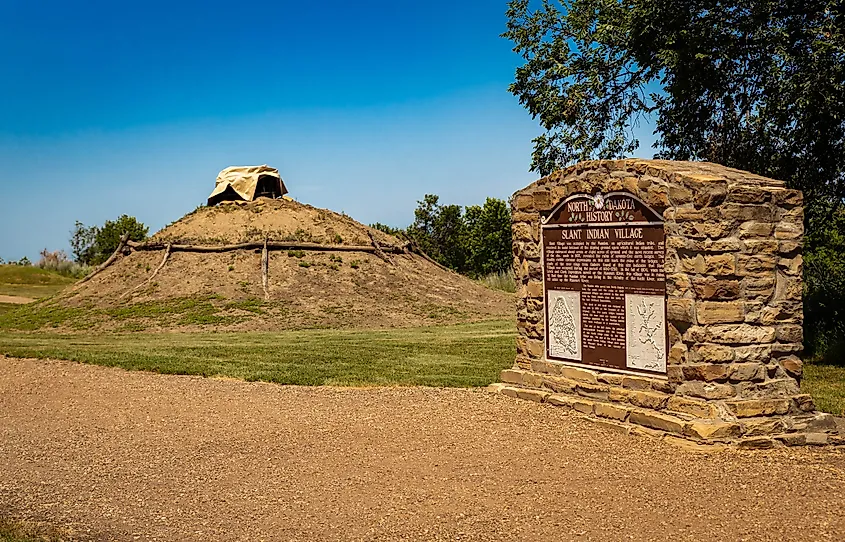
The Mandan tribe first settled the area that Fort Abraham Lincoln would come to occupy in approximately 1575. However, the area was devastated by smallpox. The village ruins were discovered in 1804 during the Lewis and Clark expedition to the area, though the village had long been abandoned. Decades later, in 1872, the U.S. Military constructed a fort close to the ruins known as Fort McKeen. The fort would later go on to be named Fort Abraham Lincoln, and in the coming years, it would become one of the largest forts on the Northern Plains. Years later, in 1907, Fort Abraham Lincoln State Park was established around the grounds. Today, the park stands as the oldest state park in North Dakota. A visit includes a window into the state’s history, with artifacts on display at the Visitor Center Museum that showcase the lives of the Mandan Native Americans who once called the area home, including a replica Mandan village. The old blockhouses and barracks that were once a part of Fort Abraham Lincoln and Fort McKeen welcome guests to see what life was like as a frontier soldier. Guests can even rent cabins for a two-night stay and enjoy a few days of biking or horseback riding.
Fort Totten
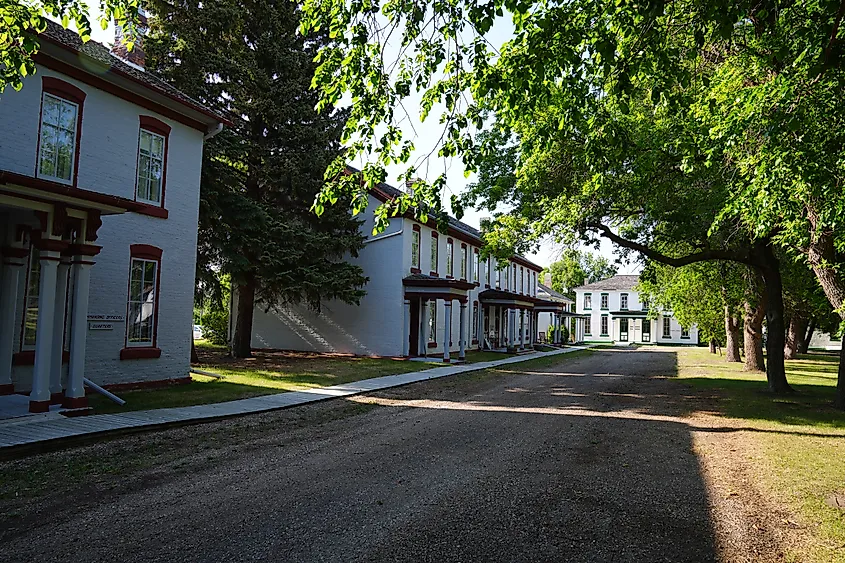
It probably is not surprising that the aptly named town of Fort Totten is home to the Fort Totten State Historic Site. In 1867, the U.S. military established a post in the region that would go into continuous service for more than 20 years. It was not until 1890 that the post was converted into a school for Native American children. When first constructed, the post was made from wooden logs, but after only a year of its existence, these wooden structures were replaced with locally made brick. Today, these same buildings house multiple museum exhibits where visitors can learn about the area’s history. Open throughout the year, Fort Totten showcases the lives of different people who lived in the area, such as Chippewa students who learned at the school or teachers who worked there. The storehouse features the history of the fort when it operated as a military outpost, and the exhibits document some of the critical periods of the area’s history, such as when the fort operated as a tuberculosis preventorium. The grounds are open to the public throughout the year.
Fort Mandan
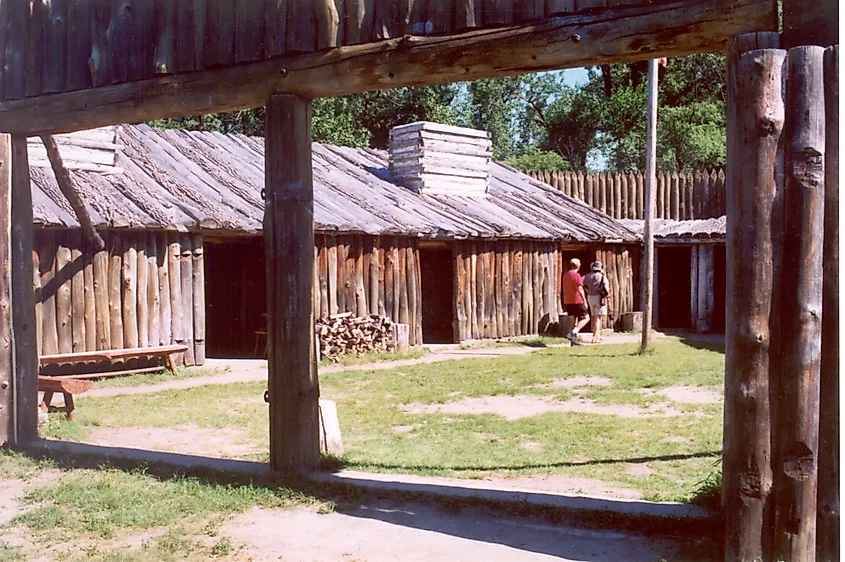
Fort Mandan is located along the Lewis and Clark National Historic Trail and was named after the pair’s neighbors. Lewis and Clark stopped at the spot in 1804 and constructed a place to spend the winter, which included two rows of huts, each made of four rooms. The expedition used the site until 1805, and it acted as their base of operations as they conducted diplomacy with regional tribes while preparing to complete their expedition. Over time, the exact location was lost, though what remains of it is generally known to be located on privately owned land. However, a historic reconstruction of the site is located at Fort Mandan State Historic Site. Located about 10 miles from where it is believed the original Fort Mandan was built, this reconstructed fort provides insights into the harsh conditions Lewis and Clark survived during their winter in the area. The site operates daily from April through September.
Fort Ransom
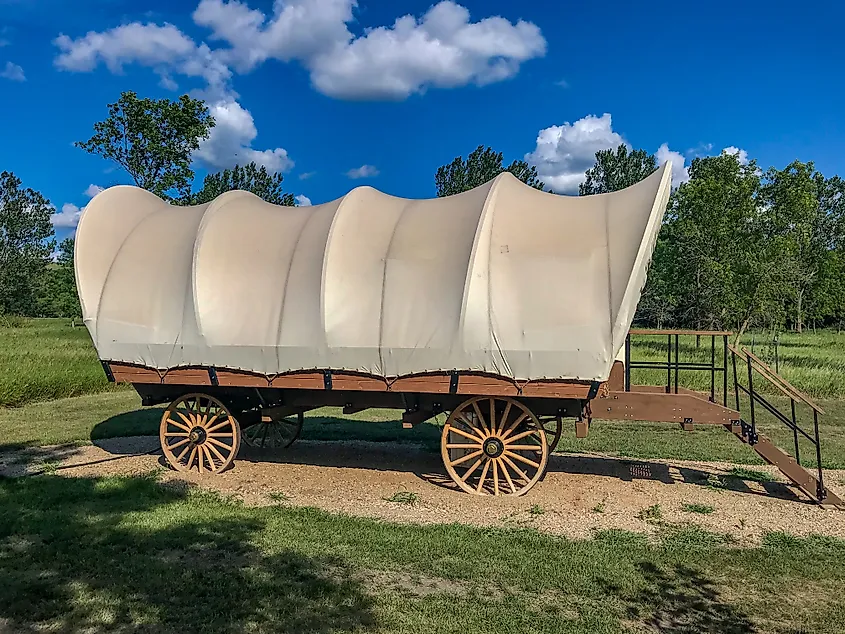
In 1866, General T.E.G. Ransom of the U.S. Army established the post that would be named Fort Ransom. For a short time, this post served to protect settlers in the area, as well as railroad workers constructing a branch of the Northern Pacific Railroad connecting Fargo and Bismarck. Located in the woods of the Sheyenne River Valley and southwest of Fort Ransom, ND, the fort only operated for a few years before being abandoned in 1872. Settlers later took advantage of the fort and used the buildings through 1880, when the site was turned over to the Department of the Interior, and the city of Fort Ransom was established. Today, very little remains of the fort, though the Fort Ransom State Historic Site commemorates its former location. The fort was dismantled, and the materials were reused during the construction of Fort Seward. Visitors mostly come to the area to visit the Fort Ransom State Park. While there is not much left to see of Fort Ransom, the nearby state park features historic sites from the time period that remain standing. Bjone House, for example, is an early pioneer home that was erected in 1870. Along with the Sunne Farm, these two structures showcase what life was like in the 19th century on this part of the frontier.
Fort Stevenson
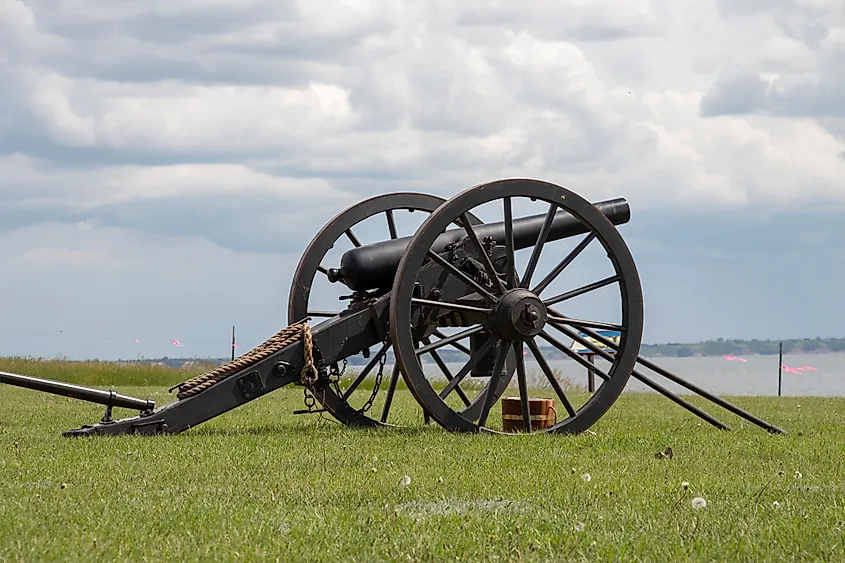
Located along a scenic view of Lake Sakakawea, Fort Stevenson State Park takes its name from Fort Stevenson, which was first established in the 19th century. Named in honor of Brigadier General Thomas Greeley Stevenson, the fort also commemorated his death during a prominent Civil War battle known as the Battle of Spotsylvania. Stevens himself was from Massachusetts, and Spotsylvania itself is in Virginia. However, the fort was established to honor a man who fought in one of the most critical battles of the war. Unfortunately, the original site can only be found under the waters of the Missouri River, and it has long since vanished. However, visitors to the park can stop by the Guardhouse Interpretive Center, which features a history of the area and reconstructs the events surrounding the creation of Fort Stevenson. While the park is open to guests for biking, hiking, or boating, the Guardhouse is the best destination to learn about the fort itself. You may even want to visit during Frontier Military Days, when guests can see cannons firing throughout the day before watching living history interpreters tell stories of what life was like in the fort.
Fort Union
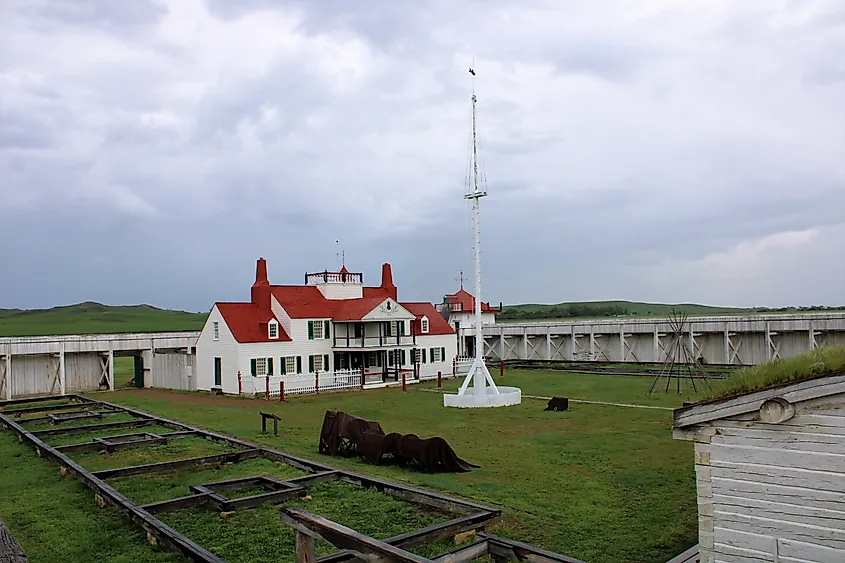
Of all the forts to visit in North Dakota, Fort Union has one of the most important histories. Dubbed “The Grandest Fort on the Upper Missouri River,” this fort was renowned for its role in local trade. Between 1829 and 1867, Fort Union stood as the most important fur trading post along the Upper Missouri River, which, of course, led to its grand title. It stood at a juncture where multiple members of the Northern Plains Indian Tribes would meet to exchange goods such as furs, buffalo robes, beads, and even weapons. Today, visitors can stop by throughout the year, though the fort maintains shorter hours during the winter. However, admission is free, and visitors can enjoy a reconstruction of the original fort that houses artifacts showcasing the extensive history of the area. Kids can even become Junior Rangers, complete a book full of activities that highlight the fort’s incredible past, and then earn badges for all the exercises they have completed.
Fort Buford
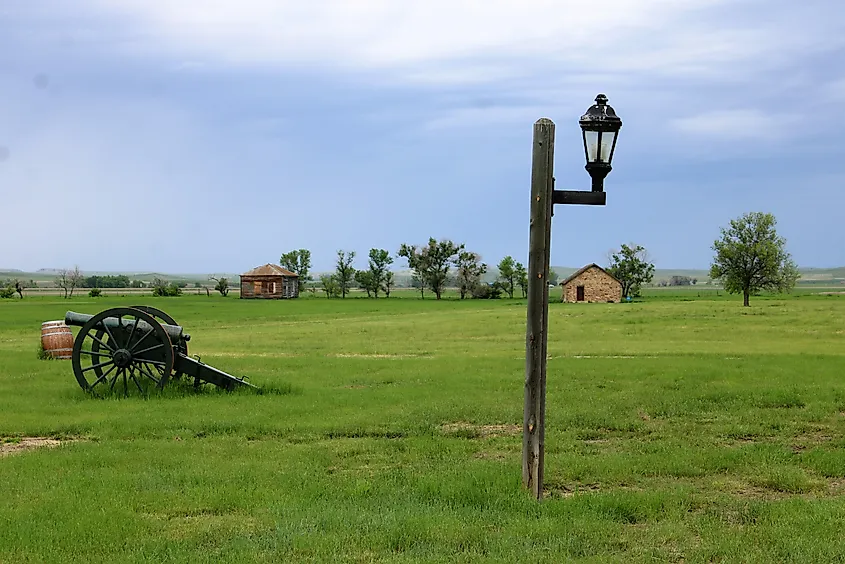
In 1866, Lieutenant Colonel William G. Rankin established a new post in the Dakota Territory that would be named in honor of General John Buford. Buford himself was a hero of the Battle of Gettysburg, and the fort commemorated the man and his deeds during one of the most pivotal events of the Civil War. The fort was completed in time for the winter and included a stockade, garrison, and both log and adobe buildings. Over the coming years, the fort would be renovated, with some buildings demolished or remodeled. Its role in history, though, is remarkable for its place in the end of the Sioux Wars. When conflict broke out between the United States and Sioux over the construction of the Northern Pacific Railway, these wars saw Sitting Bull in a fight to stop the railroad’s construction and the possible decimation of local wildlife. A famous conflict from this period was the Battle of the Little Bighorn and the defeat of Lieutenant Colonel George Custer. Yet in the end, the Sioux lost the war, and Fort Buford became the site where Sitting Bull surrendered to the commander of the fort, Major D.H. Brotherton. Today, visitors can see exhibits documenting this tumultuous period and learn more about what life was like for officers on the frontier. The grounds are open to the public from May 1 through September 30, and are available for events, school tours, and other appointments beginning from October to May.
See The Forts That Made The Frontier
Whether you are watching the waters of Lake Sakakawea or wandering the grounds surrounding Fort Abraham Lincoln, there is so much to do when visiting the historic forts that document the history of North Dakota. With locations throughout the state, a visit to a site like Fort Mandan is an excellent opportunity to learn more about how the state was founded and the struggles that settlers faced as they moved into these lands. If you want to learn more about the rich history of North Dakota, then start planning your trip to one of these many historic forts!
